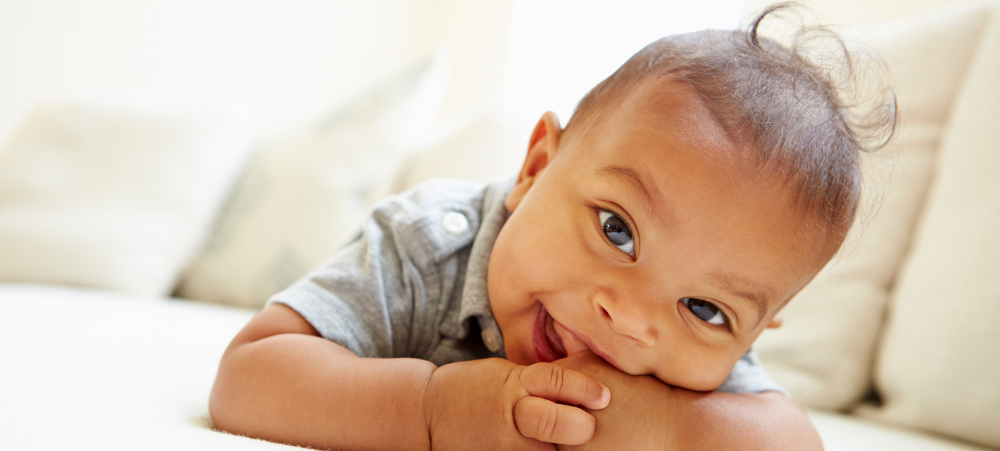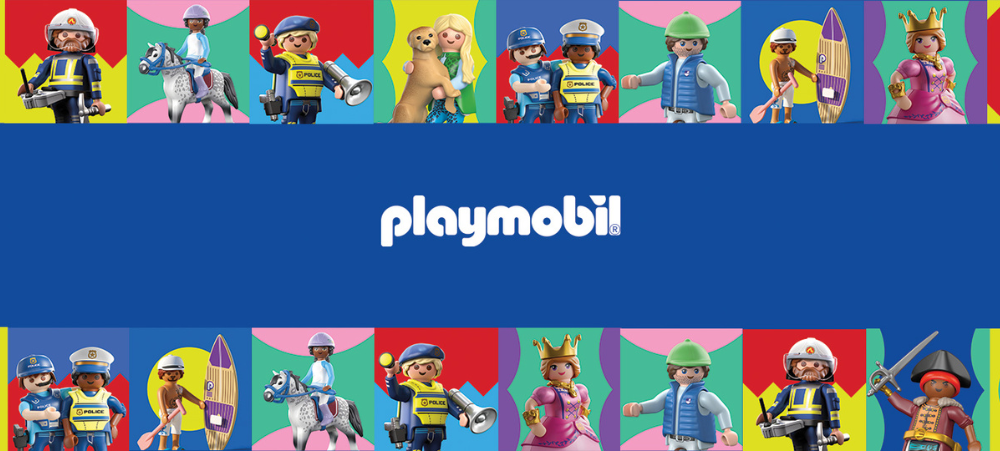The Covid pandemic caused huge disruptions to families’ routines across the globe. From parents working from home, schools and nurseries closing, mask wearing and social distancing, each measure taken against the pandemic had an impact on caregivers and their children.
This has led to concerns from caregivers about how the outbreak may have impacted their little ones reaching important milestones.
Here, paediatrician and Fisher-Price advisor, Dr Laura Jana, discusses some of the negative effects the pandemic has had on children and how helping your little one to catch up and thrive may be as simple as child’s play!
Time for bed!
Dr Laura Jana says: “Children of all ages do really well with routines – including preschoolers. When a routine is thrown off, such as what happened during the pandemic with parents not going to work, or childcare being closed, it can throw off children’s sleeping patterns.
“Sleep plays a much more critical role than it’s been given credit for. During Covid, almost all of us have had our sleep disturbed, whether that’s due to having Covid, parental stress, or a lack of routine.
“The take home message about sleep is that it represents much more than just the absence of being awake. A lot goes on during sleep for children; it’s an information processing period during which new information is processed, and all the learning children experience through engagement with the world around them while awake is solidified.
“If you want to instill a healthy sleep routine, introduce wind down cues. In addition to routine hygiene tasks, like bathing and brushing teeth, I’m a particularly big fan of bedtime reading. While older kids can certainly read to themselves, all children can benefit and enjoy having you can read aloud to them before bedtime.
“Especially for younger children, it can also be helpful to include something that they can be in charge of that makes the transition to bedtime easier.”
How to improve social skills…
Dr Laura Jana says: “One of the subjects that has come up the most is how the pandemic has affected children’s social emotional development.
“As someone focused on healthy early brain and child development, I often emphasise the importance of social emotional development by pointing out that it’s as important for young children to learn how to read people – their facial expressions and understanding people’s moods, and body language – as it is to read books. This plays a big role in children’s ability to feel empathy, to take someone else’s perspective or take turns, those sorts of things.
“Of course, the concern during the pandemic has been that when you cover up half of someone’s face, with a mask, coupled with a decrease in social interaction due to social distancing, that it might impact these critical elements of social emotional development during the first five years.
“Fortunately, it continues to be clear that caregivers – even with masks on – can positively impact children’s early development, and that young children can continue to learn these foundational skills – how to read other people’s emotions, how to listen or take turns – through interaction with you.”
“What parents can focus on is plenty of caring responsive interactions with their children. So, what does this look like day-to-day? It’s as simple as playing with your child. You can do this with a game, reading a book, taking a walk or interacting with a toy – all while having conversations about it. Given the leading role that a child’s day-to-day experiences and interactions plays on learning, these simple and fun back-and-forth interactions can really help kids make up for a lot of what might otherwise be lost when it comes to learning.”
Getting back into the classroom
Dr Laura Jana says: “Children may have been a bit freeform at home for the past year during the pandemic without much routine or structure, so it shouldn’t be surprising that some will need a bit more help getting back into the routine of going to school or childcare.
“This can mean figuring out how to follow classroom rules, concentrate on the topic or activity at hand, and just generally practice how to become part of the classroom again. All of this has a lot to do with the development of what are known as executive function skills, which have their most rapid rate of development between the ages of three and five.
“Children get to practice and develop their executive function skills naturally through interacting with other kids. But especially when in-person interactions have been limited due to the pandemic, there are things you can do to help foster them.
“Age-appropriate games allow children to practice following the rules of the game with you.
“Books are great for lots of reasons, including that reading adds structure – from flipping the pages with a two-year-old and pointing at the pictures, to learning to focus one’s attention for longer periods of time.
“It’s the same with certain toys, such as interactional ones where you have to take turns or have simple rules to follow. It could be that you must do something, then push a button, then wait for something else to happen.
“Play that’s structured can help kids learn to fit in when there are going to be rules.”
Choose a mix of toys…
Dr Laura Jana says: “As parents and caregivers take on greater responsibility for enhancing their children’s early learning during the pandemic, it can help to make use of a variety of toys.
“Some toys serve to help develop what I refer to as the “IQ Skills” – whether it’s the alphabet or numbers or counting. These reading, writing, and arithmetic type skills have long been and continue to be foundational for school readiness. Yet for many young children, the pandemic has interfered with the introduction and practice of their ABCs and 123s that might otherwise have occurred in preschool or kindergarten.
“But as important as these sorts of toys are for learning, the benefit of also having toys that simply exist to bring children joy shouldn’t be overlooked by parents.
“If there are toys that your child just loves, and they want to play with it and are excited about playing with it, that sort of engaged fun can help buffer them against the potentially permeating stress of the pandemic that we’ve all felt for the last couple of years.
“And finally, as another type of toy, also think about ones that get your child up and moving. With restrictions on travel, outings, and gatherings, on top of school and childcare shutdowns, young children (as with most adults I know) are at risk for having had less opportunity to be physically active throughout the pandemic. Toys and games that encourage much more active play is something to keep in mind as well.”

Fisher-Price Top Pick to offer children a mix of toys
3-In-1 Music, Glow And Grow Gym™: The Fisher-Price® 3-in-1 Music, Glow and Grow Gym™ activity play mat is the place for your little one to ‘glow up’ their playtime. Newborns can reach, bat, and grasp 5 linkable activity toys including a mirror, soft rattle hedgehog toy, BPA-free snail teether, crinkle rainbow toy, and a music and lights otter. The music and lights otter plays 15 minutes of music and shines a soft-glowing light to make playtime otter-ly fun on or off the mat! As your baby grows, remove the two arches for tummy time on the large, comfy mat, so they can push up and engage those neck and core muscles. Plus, the gym’s high-contrast colours can help with baby’s earliest visual development.
- Music & lights baby gym with 5 linkable activity toys for infants from birth and up
- Comes with 5 activity toys: music & lights otter with soft tail, self-discovery mirror, soft rattle hedgehog toy, BPA-free snail teether, and double-sided crinkle rainbow toy
- Take-along otter with up to 15 minutes of fun music and lights
- Gazing at their reflection in the mirror helps baby’s self-discovery and large character faces aid in baby’s visual development
- Large, 30 x30 inch play-mat with high-contrast colours is machine-washable for easy cleaning
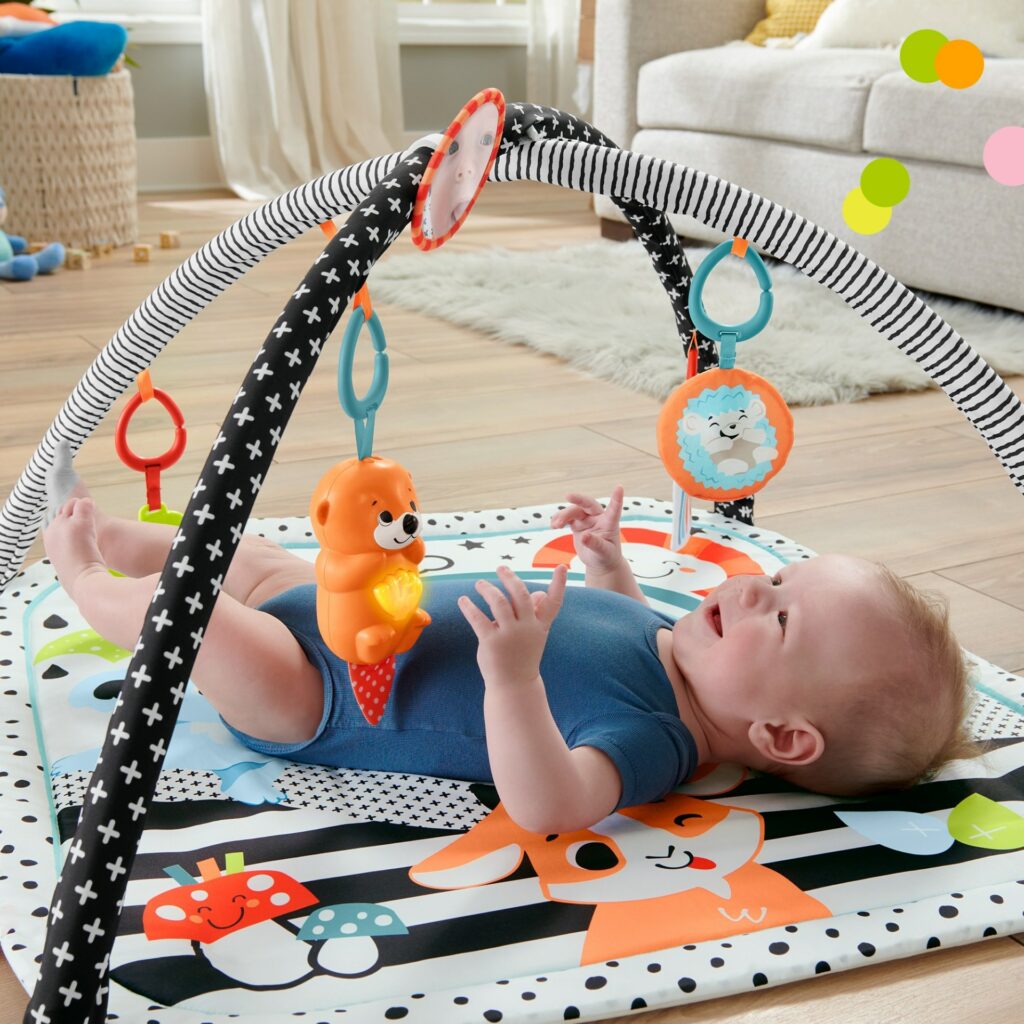
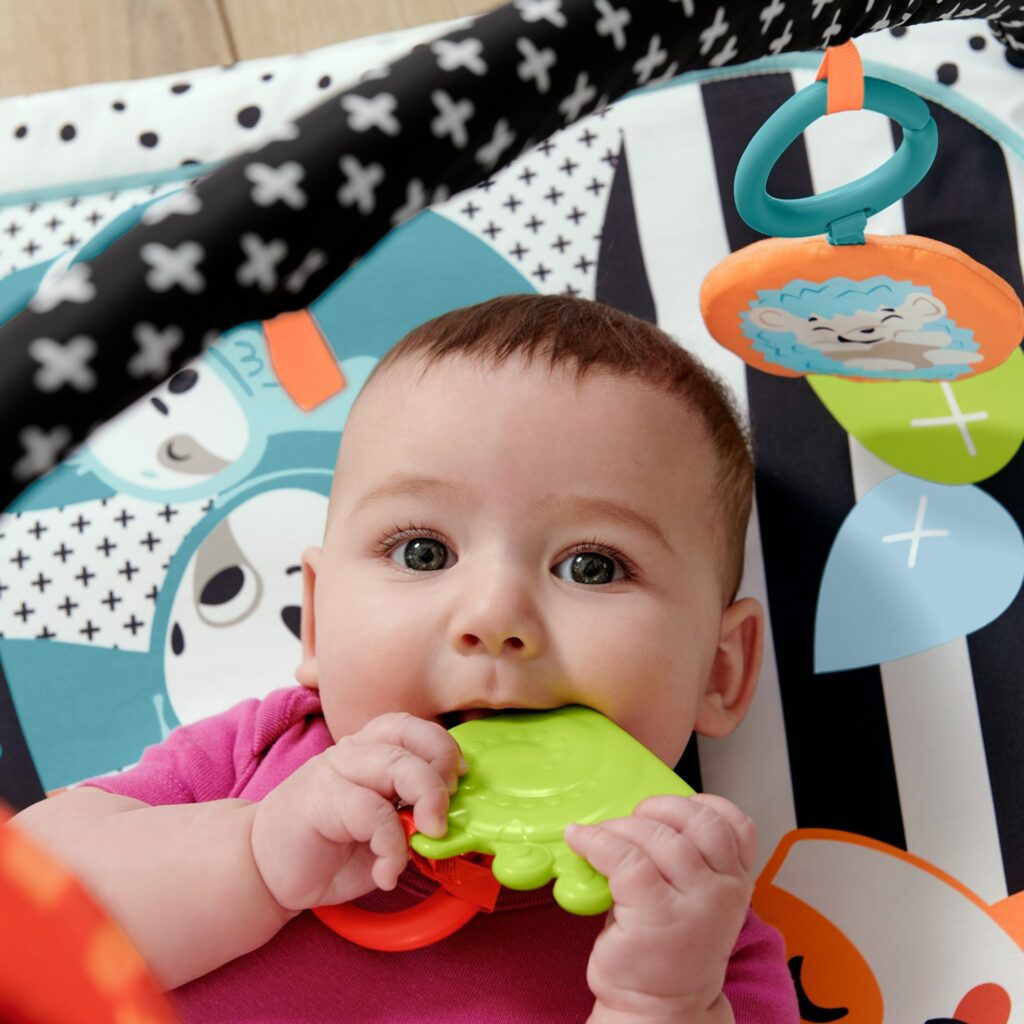
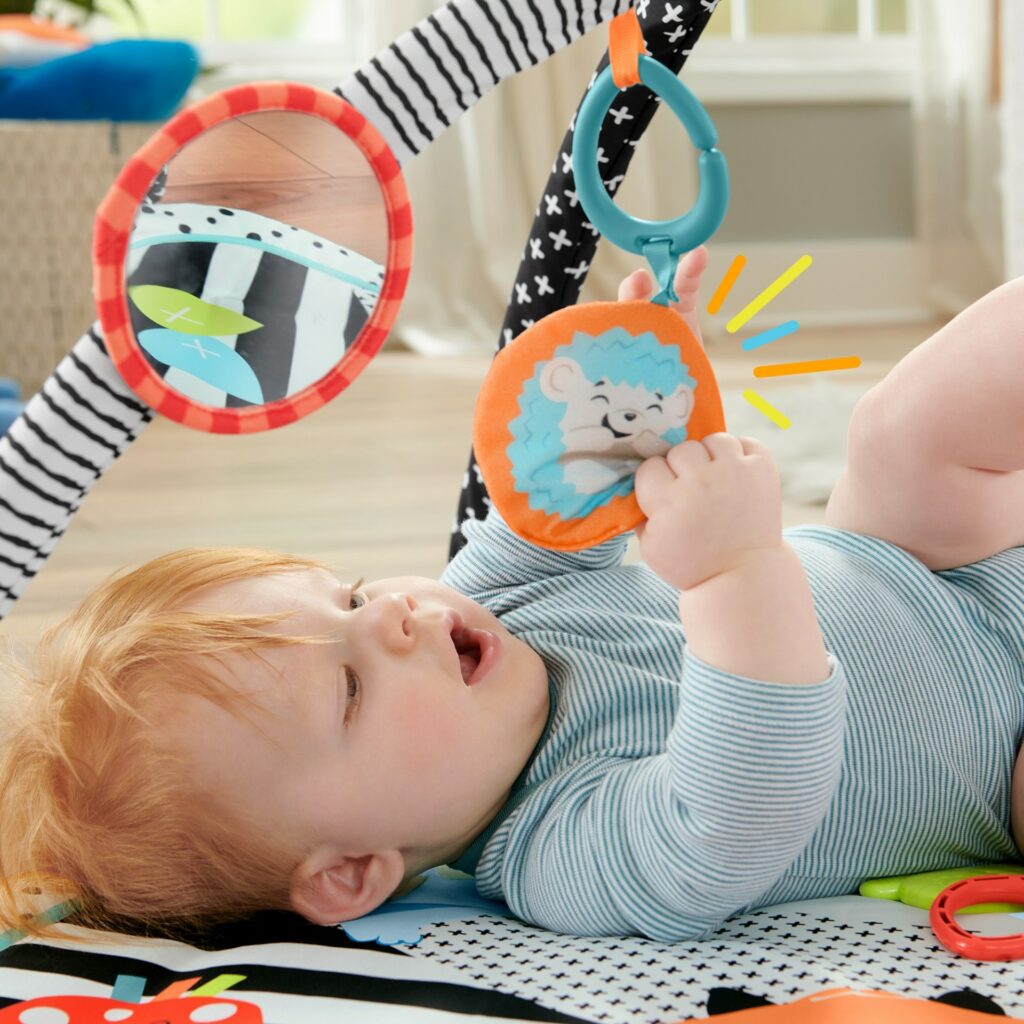
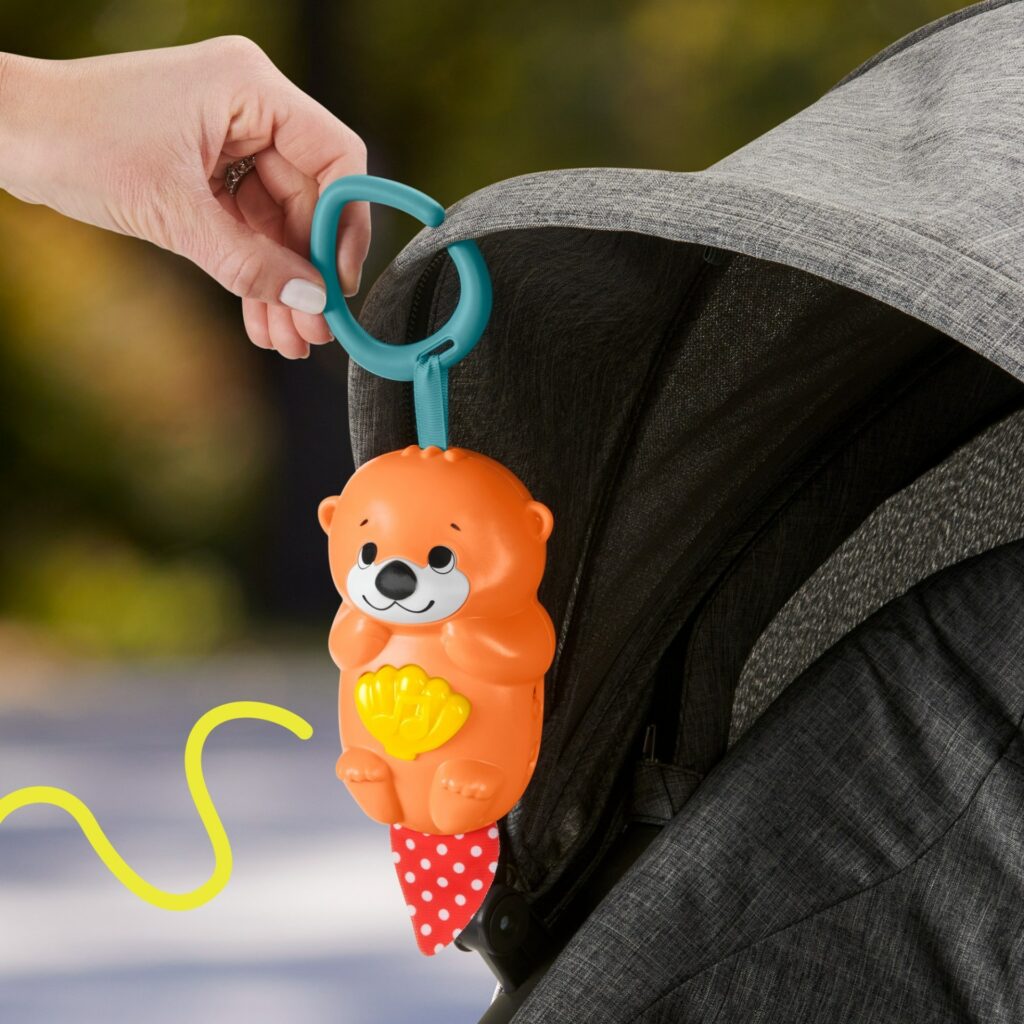
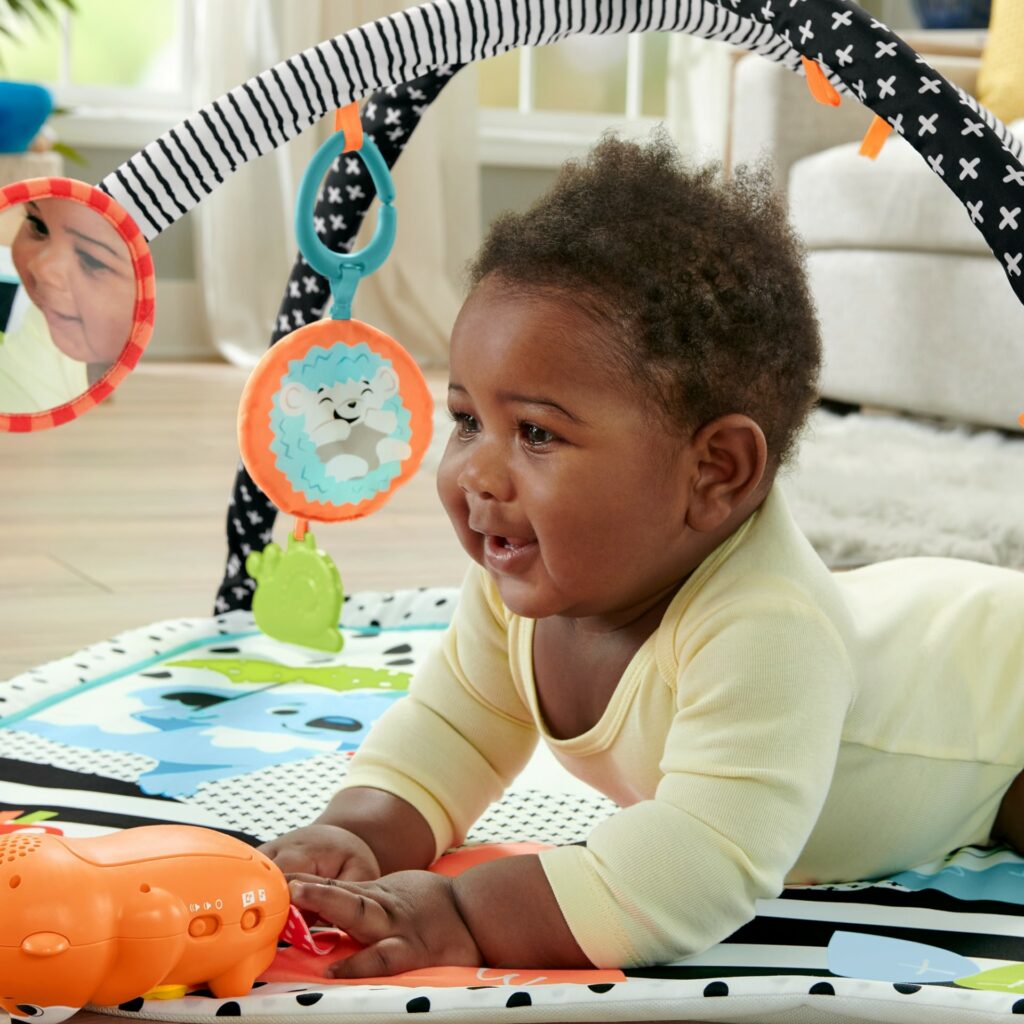
It’s not just child’s play!
Dr Laura Jana says: “For all of us, the pandemic has certainly posed challenges. For all of us as parents, this includes finding a healthy balance between time to take care of our daily responsibilities while also continuing to help our children learn and thrive. When thinking about this challenge in the context of the play and the types of toys parents can enlist, there really are two overarching categories. The first involves age-appropriate toys that your child can play with and enjoy independently. And then there are the toys that you can play with alongside your child (in reality, the same toy can serve in both instances). As much as you can, try to carve out some time to spend with your child, away from your computer screen; just like you would reading a book; it’s really hard to multitask and read aloud at the same time!
One of the best things you can do is to commit to finding time each day when your brain can tune out all the other “stuff” and you and your child can truly enjoy engaging in interactional play together, complete with plenty of talking, asking questions, and, of course, fun and laughter.
“In addition to putting a smile on your faces, you get the added benefit of knowing that perhaps the single most important factor for a child’s development, especially in those early years, is a caring responsive adult.
“Finding time to have that joyful interactive play with your child for a period of time would be the thing I think people are at risk of overlooking or cutting out when pandemic stressors weigh down on them, and yet this is what little ones (and their caregivers!) stand to benefit from most.”
Fisher-Price® might be 90 years old, but we don’t act a day over five. Because the only way you can make awesome things for babies and kids is to put yourself in their tiny shoes. That’s why we’ve made it our mission to put the fun back in functional baby gear and the play back in playtime. We’re heading back to childhood. Wanna come?
Where development comes into play™
- Sensory Skills: A variety of textures, colours, and sounds engage and delight your baby’s developing tactile, visual and auditory senses.
- Gross Motor Skills: Pushing up during tummy time to engage with the toys helps strengthen your baby’s neck and core muscles.
- Fine Motor Skills: Reaching for, grasping and bringing the toys to their mouth helps your baby develop hand-eye coordination and dexterity.
We understand that there are many aspects that encompass a Mother, Father or Child and strive toward providing resources and services that accommodates this.
Our content is aimed to inform and educate families on issues starting from pregnancy through to the challenges of the teen-age years.
- How The Elf on the Shelf Makes School Breaks Easier, Happier, and a Little More Magical! - December 1, 2025
- Tips for Breastfeeding in Public: Confidence and Comfort - November 20, 2025
- Eskort launches Kiddos: South Africa’s first pork range made just for kids - November 13, 2025

